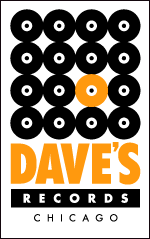
Chronologically, the first names associated with jazz saxophone are generally Frankie Trumbauer, Coleman Hawkins, and Sidney Bechet. But Archeophone Records’ fascinating new 2CD set The Moaninest Moan of Them All: The Jazz Saxophone of Loren McMurray, 1920-1922 throws a spotlight onto the short recording career of a terribly undersung Kansas City saxman, offering an enlightening and satisfying 50-track deep dive. The contents, including an 80-page booklet with exhaustive contextual notes by Colin Hancock and Mark Berresford, will surely be received with enthusiasm by fans of early jazz. The set is available now.
It’s important to note straightaway that the producers of this collection, namely Richard Martin, Meagan Hennessey, and Colin Hancock, are not making a case for Loren McMurray as the baseline originator of jazz saxophone but instead as a crucial if overlooked predecessor to the established names on the instrument. To make it plain, it’s McMurray’s sax in the first Kansas City jazz band to record commercially, Eddie Kuhn’s Dance Specialists, the leadoff band on disc one of this set.
As mentioned in the booklet, pianist Kuhn’s outfit (co-run by violinist Emil Chaquette) is better described as a “rag-a-jazz” entity interestingly augmented by the accordion of Frank Papile. But foremost, they were a dance band, even when recording as Eddie Kuhn and His Orchestra. It’s McMurray who really brings the jazz verve, which is notable, as up to the point of these recordings, the sax was primarily associated with either military bands, classical orchestras, or as a novelty instrument (having been invented by Adolphe Sax only 80 years before).
The Moaninest Moan of Them All features ten bands, including McMurray’s California Thumpers, the saxophonist’s one leadership shot, which grabbed players from Eddie Elkins’ Orchestra, a Cali-based group that McMurray joined in 1922. Along with the groups of Kuhn and Elkins, the other aggregations are Mike Merkels’ Orchestra (who also cut sides as Eddie Davis’ Orchestra), Harry Raderman’s Jazz Orchestra, Sam Lanin’s Southern Serenaders, Baily’s Lucky Seven, the Original Memphis Five (who also cut sides as Jazz-Bo’s Carolina Serenaders), Ben Selvin’s various orchestras, and the Virginians.
This is a lot of groups in a two-year span (with the geographical monikers intended to stir record buyers’ notions of authenticity), but it covers only a portion of McMurray’s known recording sessions from across the period, as his skills were in demand, reaching all the way to Paul Whiteman, who enlisted him to play in the Virginians. Now, those holding a negative view of Whiteman need not worry, as the Virginians, led not by Whiteman but by clarinetist Ross Gorman, were a small group spin-off featuring players from Whiteman’s band that, befitting McMurray’s strengths, was legitimately jazzy.
Prior to recording, McMurray was known as “The Finest Hot Man in Kansas City,” a level of regard that is consistently reinforced by his stature in the sides collected here, of which he’s reliably the jazziest aspect. And it should be further emphasized that the jazziest, and indeed the most inspired band heard on this set, is McMurray’s own.
And I’d say the standout song on the entire set is the California Thumpers’ richly jazzy “Haunting Blues,” which really works up a head of steam and without a weak link in the ensemble. Plus, there’s some cool croaky tuba in “Oogie-Oogie Wa-Wa” and a short late passage with some “exotic” tom drumming that hit my ear like a precursor to Raymond Scott, and by extension, Warner Brothers’ Termite Terrace (note that while there’s a sizable percentage of far-off lands’ exoticism throughout The Moaninest Moan of Them All, none of it steps over the line into the inappropriate).
For obvious reasons, the Elkins material is roughly comparable in quality to the cuts by the Thumpers, but there’s just something that gives the McMurray-led material the edge. Methinks it’s the saxophonist in the driver’s seat. However, the whole of disc two is a cooker, and disc one ain’t far behind in terms of early jazz heat; a handful of the groups, including the sharp as tacks Bailey’s Lucky Seven, are heard on both discs.
To be clear, the cumulative effect of McMurray’s work doesn’t find him unseating Coleman Hawkins as the king of the jazz saxophone catalysts. For one thing, anybody who’s seriously into pre-bop jazz has heard “Body and Soul.” Contrasting, jazz discographer Brian Rust didn’t even get McMurray’s first name right. It was Loring in Rust’s book Jazz Records 1897–1942, where it remained uncorrected for years (a mistake carried over to the internet).
But Hawkins certainly heard McMurray, as both were based in Kansas City. There isn’t a bold similarity in the playing of the two, but The Moaninest Moan of Them All still solidifies its subject as a worthy precursor on the saxophone. Furthermore, the work collected here inspires wonderings over what might’ve transpired had McMurray not died so young, the victim of complications from a sinus infection, just a few months after his 25th birthday. The grade here applies to McMurray’s high level of play across a concise timeframe, but also to the set’s admirable musical scholarship.
GRADED ON A CURVE:
A












































